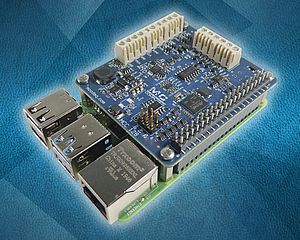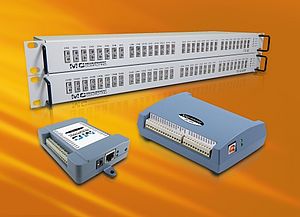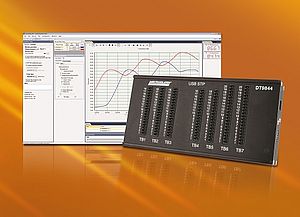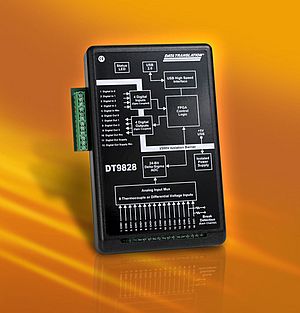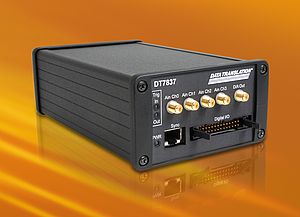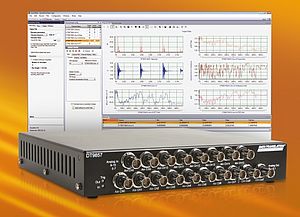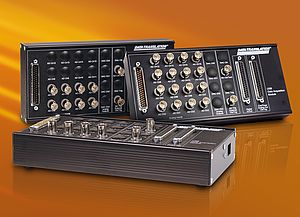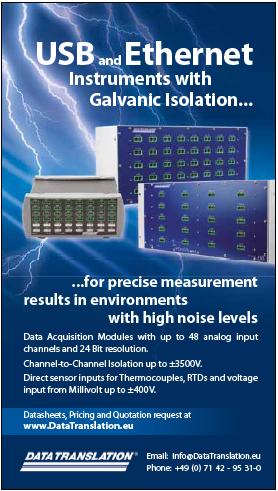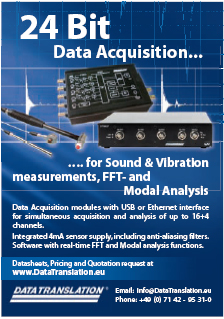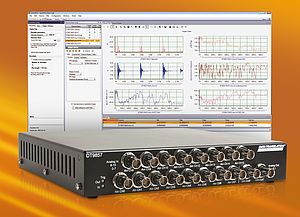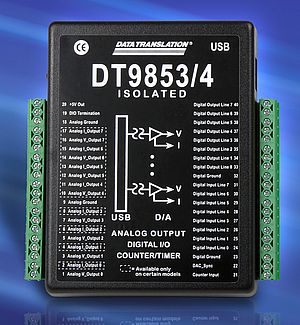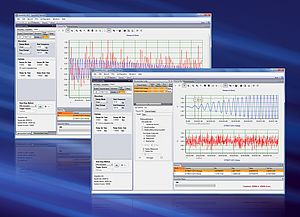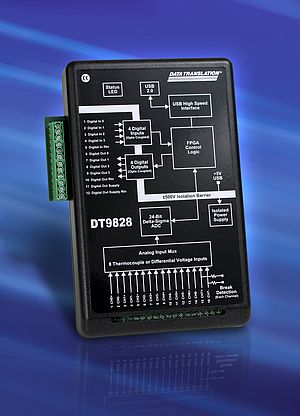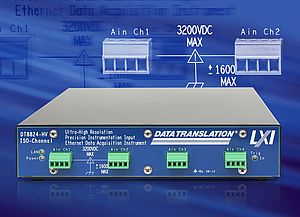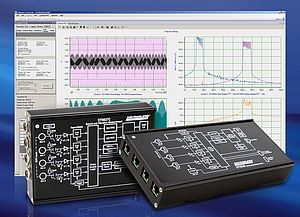The new DT9857 series expands Data Translation's range of USB data acquisition modules for vibration measurements with 24-bit resolution. The new modules provide eight or sixteen analog inputs for IEPE/ICP sensors, such as measurement microphones or accelerometers. Key features also include two 32-bit analog outputs, digital I/Os, a 32-bit tachometer input and three counters, supporting a wide variety of acoustic and vibration measurement applications. Using the sync port, up to four modules can be easily connected together to implement a high-performance vibration measurement system with up to 64 synchronous inputs.
The analog input channels each have a 24-bit Delta-Sigma A/D converter and integrated anti-aliasing filters to ensure high-accuracy data acquisition at a sampling rate of up to 105.4 kHz per channel. The 4 mA current source for the IEPE/ICP sensor, AC or DC coupling and gains of 1 and 10 are all individually programmable for each input. Two analog outputs with 32-bit resolution and 216 kHz output rate provide a high-precision signal source for any waveform, for very low distortion (THD) sine waves, and for a wide variety of noise signals.
In addition to a 32-bit tachometer input (±30 V) for measuring rotational speed, the new USB modules also provide two counters for phase measurements, one general-purpose counter/timer and 16 digital 1/O channels. The analog and digital inputs and outputs can be run simultaneously and synchronously. Many hardware trigger functions, such as pre and post triggers as well as threshold triggers for any analog input channel, are software programmable and easy to configure.




